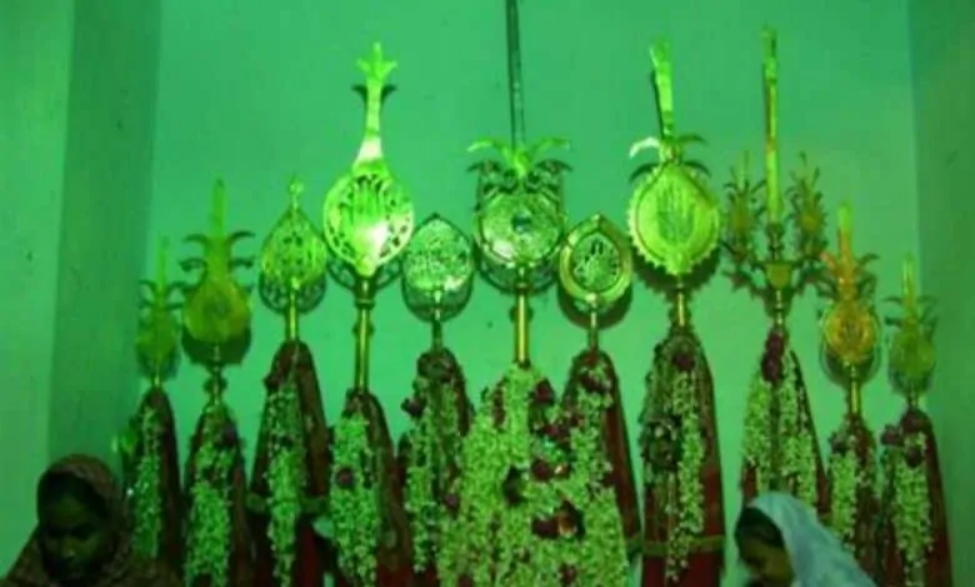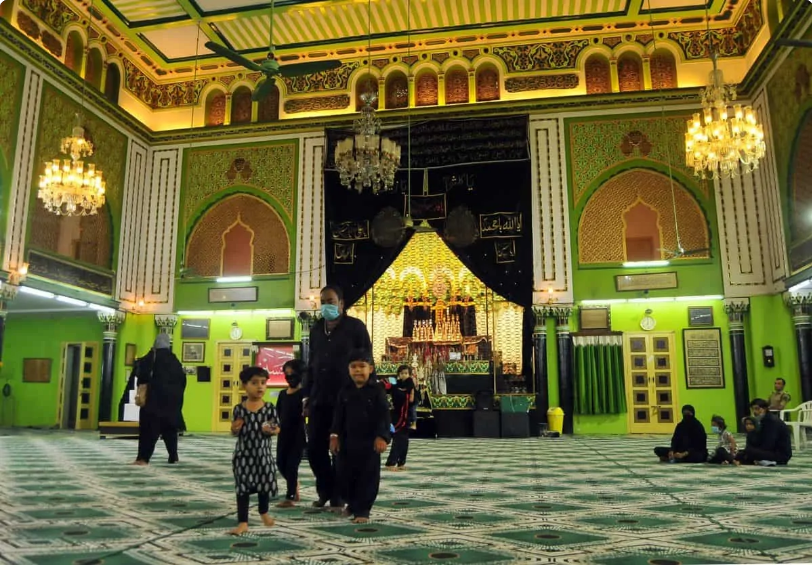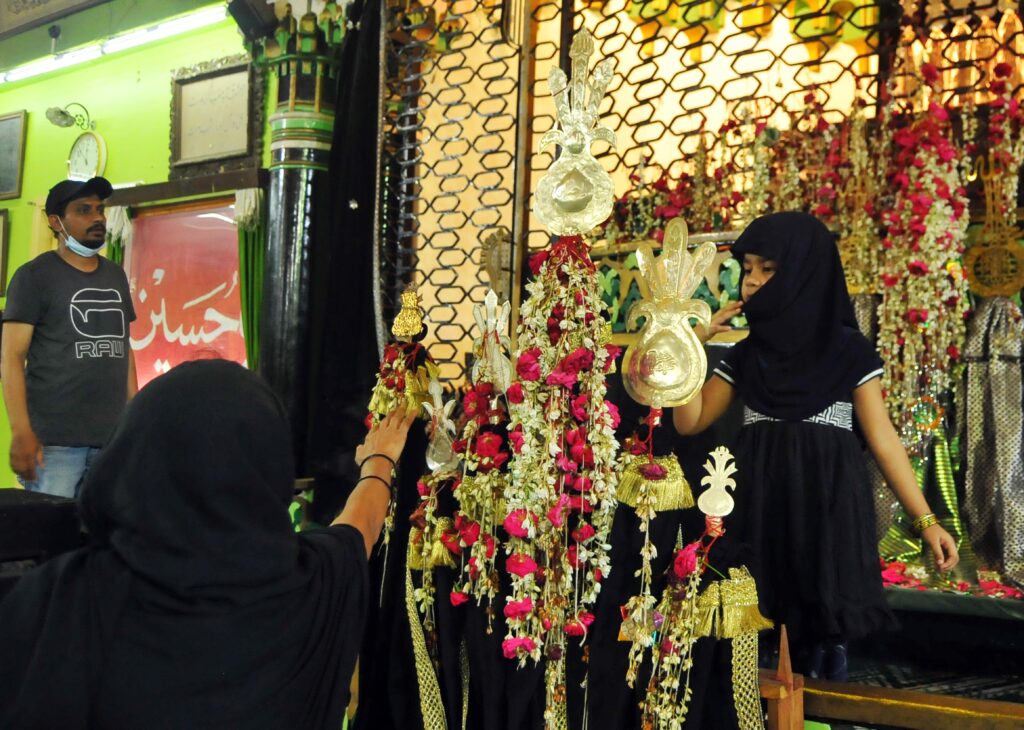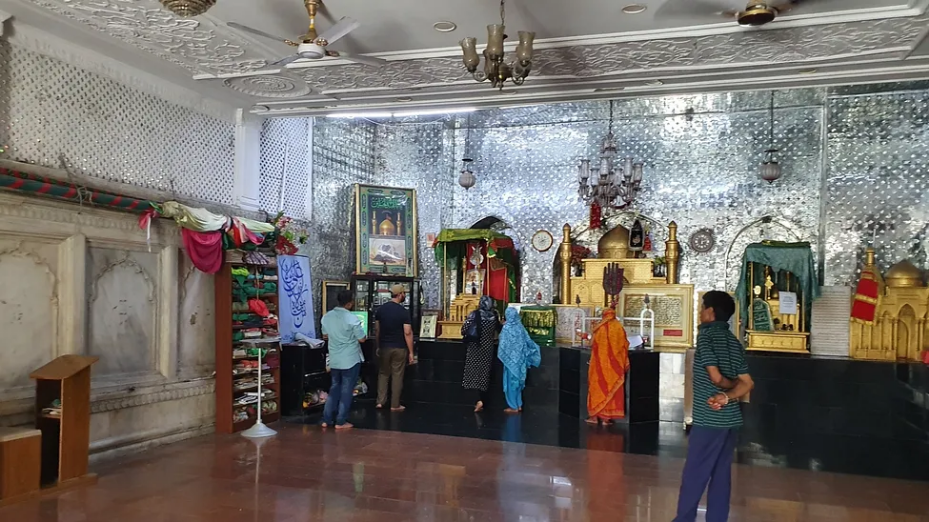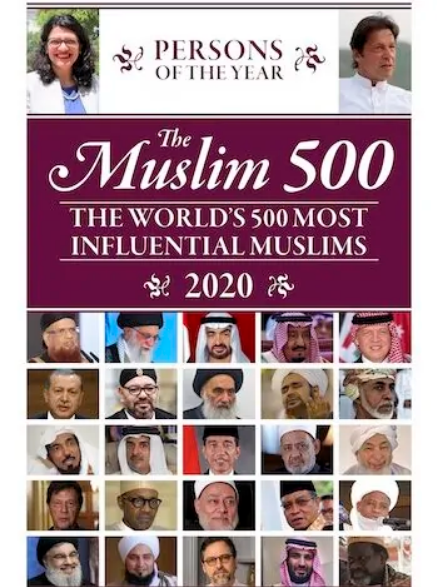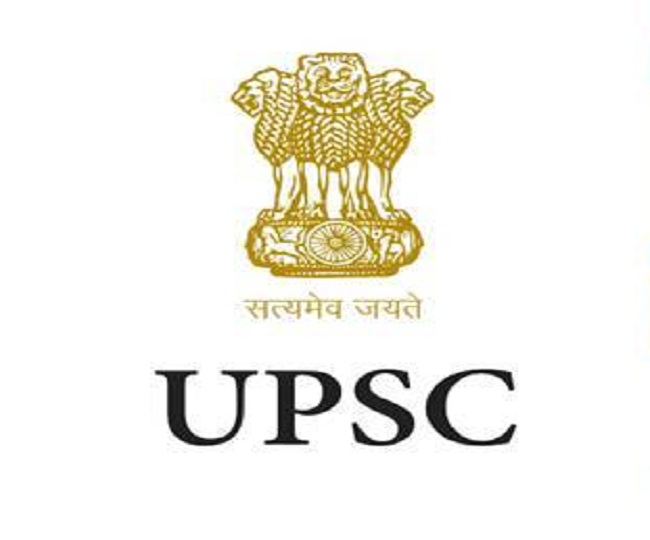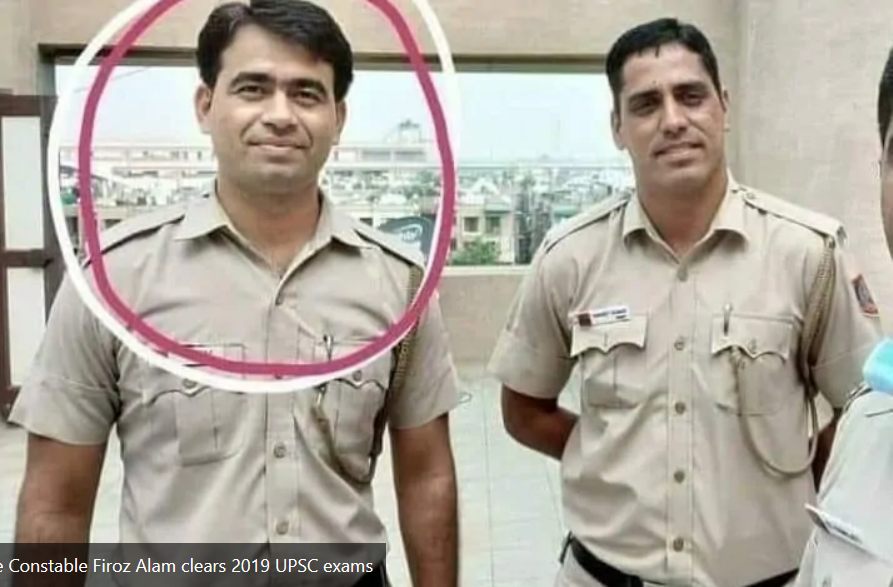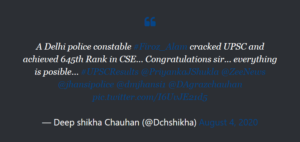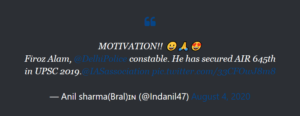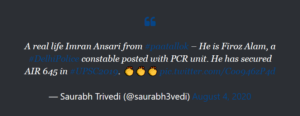Hyderabad: Muharram, the first month of the Islamic calendar, is known around the world over for the mourning of Hazrat Hussain, the son of Imam Ali and a grandson of the Prophet Muhammad, who was martyred in the battle of Karbala, in Iraq (about) about 1400 years ago.
Hyderabad’s Moharram traditions, especially its huge processions, are believed to be the largest in the Indian sub-continent, which witness the participation of thousands of people, including those of non-Islamic faiths.
The processions begin from the first day of Muharram and end on the tenth of the same month. The Alam, which is a symbolic representation of the martyrs who died in the battle of Karbala, is usually carried out of the Bibi Ka Alawa ashoor khana on an elephant. It is followed by performing Khooni Matam, flagellation as a practice of mourning.
Every Ashoorkhana’s Alam has a Tabaruq (leftovers from the battle of Karbala or the anything which is associated Hazarth Hussian’s family).A number of people visit the Alam to offer their prayers.
History
The Qutb Shahi rulers were Shia Muslims. During the reign of Mohammed Quli Qutb Shah, the fifth Qutb Shahi King, a prominent religious man named Aga Ali went for Hajj pimilgrimage (performed in Mecca). During the pilgrimage he had the privilege of acquiring a double edged sword which belonged to Imam Jafar Al Sadiq,who is a member of Prophet Hussain’s family.
The sword was received by Mohammad Quli Qutb Shah with royal honors. He later directed to construct Hussaini Alam Ashoor Khana and appointed Aga Ali as its chief cleric. The relic was installed as an Alam, which is incorporated in a specially designed Alam. The monarch also issued a decree for a Mahi Maratib, Royal Umbrella and Naubat for the Ashoor Khana. Aga Ali was endowed with Jagir and pension for the upkeep of the Ashoor Khana.
The Langar of this ashoor khana is very famous, and still attracts thousands of Muslims every year It was started by Hayat Bakshi Begum, the daughter of Mohd. Quli Qutb Shah, on her boon (mannat) coming true. According to a legend, Hayat Bakshi Begum’s son Abdullah was on his way to the Golconda fort, when the elephant he was travelling on went wild.
The elephant then picked up pace, threw down the mahout and ran with the then one-year old Prince into the forest. The worried mother seeing the crescent of Muharrum on the same day prayed that if the Prince returned safely she would offer a chain of gold equal to the weight of the Langar.
She vowed that this chain of gold would be tied round the waist of the Prince and he would be made to walk to the ashoor khana with it. After a day or two, the elephant recovered from its fit and reportedly returned tamely to the fort. With her wish coming true, the Queen mother arranged for a carpet to be spread from the Golconda fort to Hussaini Alam.
The legend also says that Hayat Bakshi Begum tied a gold chain of forty maunds (a traditional unit of mass) around the body of the Prince, who later went walking to the Hussaini Alam ashoor khana. The Alam in the historical Bibi-ka-Alawa ashoor khana goes round in a procession within the precincts of the building on the night of ashoora , the 10th day of Muharram.10). Ashurkhanas are called so since it is linked to the day of Ashura.
Hayat Bakshi Begum held a unique place in Hyderabad and Qutb Shahi history, give that she was connected to three kings: she was the daughter of a monarch (Mohd. Quli Qutb Shah), wife of a king (successor of her father, Sultan Mohd. Qutb Shah) and her son was also a king (Abdullah Qutb Shah). She was believed to be one of the most powerful women in the dynasty.
Courtesy: Siasat.com
